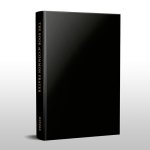The Critical Edition of the Mahabharata, completed between 1933 and 1966, represents a landmark in the textual history of an epic with a nearly 1500-year history. Not only is the epic massive (70,000 verses in the constituted text, with approximately another 24,000 in the Vulgate) verses, but in its various recensions, versions, retellings, and translations it also presents a unique view of the history of texts, narratives, ideas, and their relation to a culture. Yet in spite of the fact that this text has been widely adopted as the standard Mahabharata text by scholars, there is as yet no work that clarifies the details of the process by which this text was established. Scholars seeking clarification on the manuscripts used or the principles followed in arriving at the Critical Text must either rely on informal scattered hints found throughout academic literature or read the volumes themselves and attempt to follow what the editor did and why he did so at each stage.
This book is the first work that presents a comprehensive review of the Critical Edition, with overviews of the stemmata (textual trees) drawn up, how the logic of the stemmata determined editorial choices, and an in-depth analysis of strengths and drawbacks of the Critical Edition. Not only is this work an invaluable asset to any scholar working on the Mahabharata today using the Critical Edition, but the publication of an English translation of the Critical Edition by Chicago University Press also makes this book an urgent desideratum.
Furthermore, this volume provides an overview of both historical and contemporary views on the Critical Edition and clarifies strengths and weaknesses in the arguments for and against the text. This book simultaneously surveys the history of Western interpretive approaches to the Indian epic and evaluates them in terms of their cogency and tenability using the tools of textual criticism. It thus subjects many prejudices of nineteenth-century scholarship (e.g., the thesis of a heroic Indo-European epic culture) to a penetrating critique. Intended as a companion volume to our book The Nay Science: A History of German Indology (Oxford University Press), this book is set to become the definitive guide to Mahabharata textual criticism. As both a guide into the arcane details of textual criticism and a standard reference work on the Mahabharata manuscript tradition, this book addresses a vital need in scholarship today.
Trustpilot


